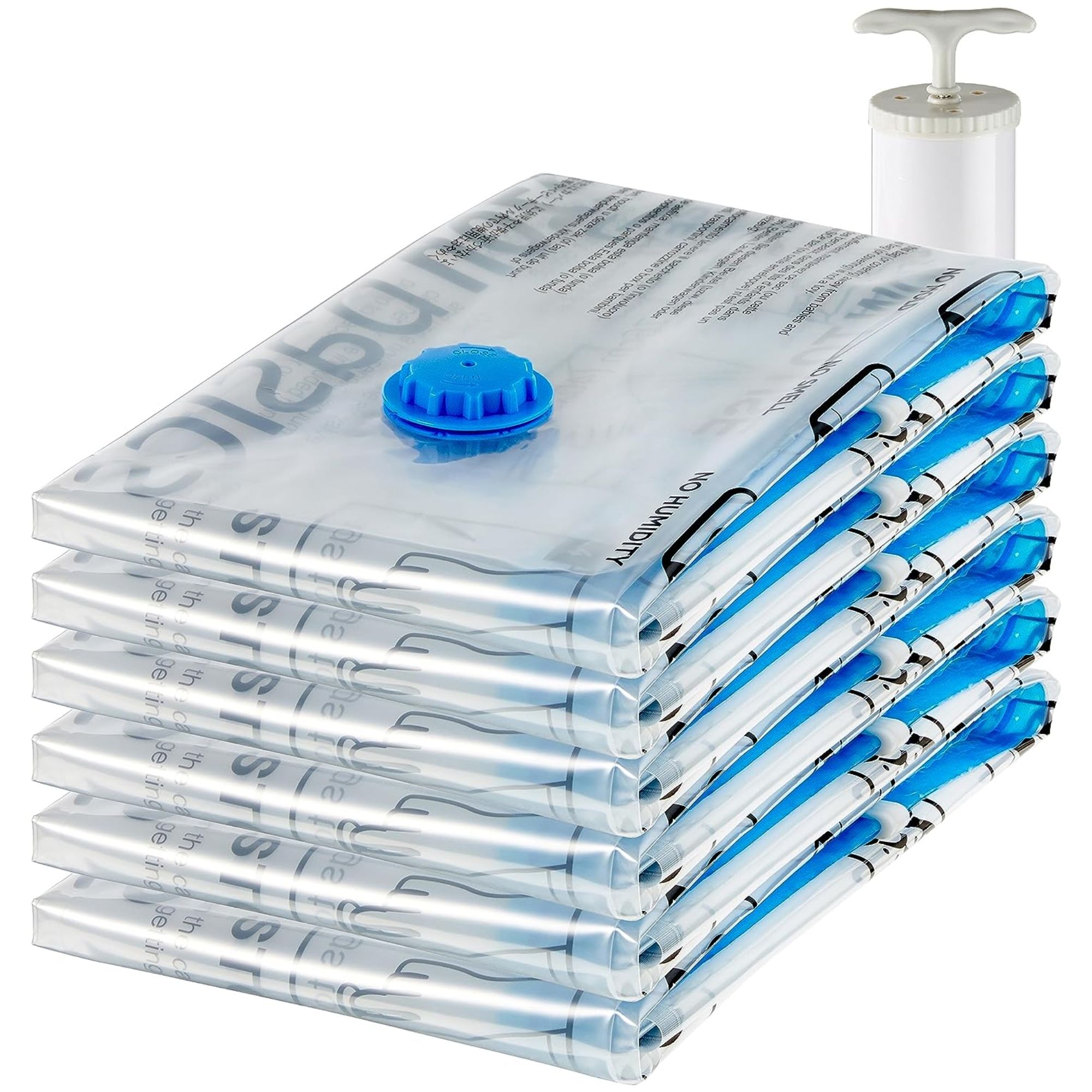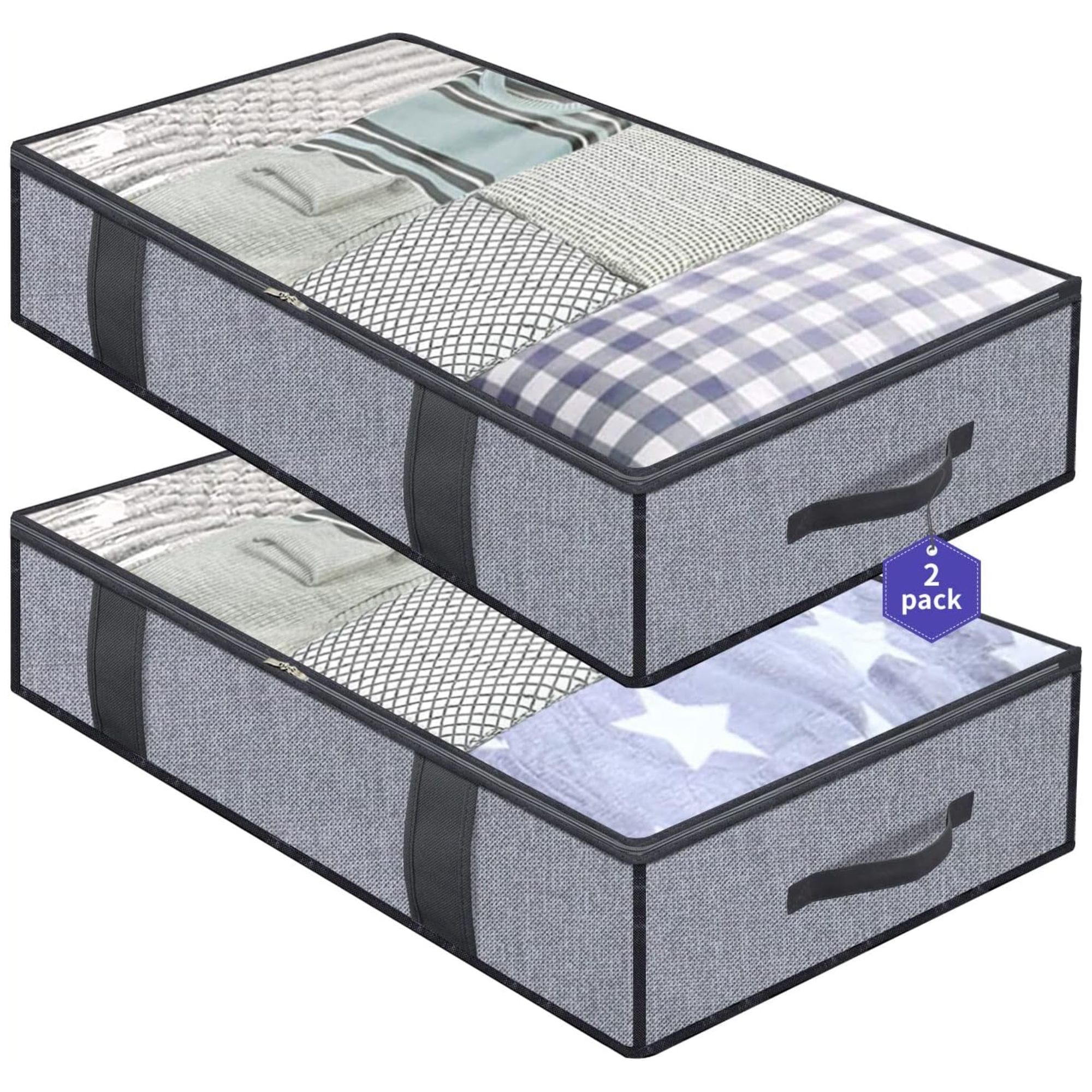The ultimate guide on how to wash, dry, and care for comforters and duvet inserts without making them lumpy, musty, or damaged
Make your bedding as fresh and plush as the day you bought it with our expert tips


Snuggling under cozy bedding is a sumptuous feeling when cooler weather arrives, but do you know how to wash, dry, and care for comforters and duvet inserts to keep them as fresh, soft, and plump as day one?
If you're not sure where to start – or simply want to turn your bedroom into the ultimate cozy haven this winter – here's our ultimate guide on looking after your best duvet inserts and best comforters.
How to wash a comforter or duvet insert like a pro
Before we get into it, you may be wondering, 'How often should I was a comforter?' Well, according to our bedding pros, you should be aiming to wash your duvet insert once every three months, while a comforter should be cleaned every two months, to get rid of dust mites, and banish stains and odors.
You should also wash your bedding more frequently in the warmer summer months to avoid any unhygienic, common bedding mistakes, which is equally as important when washing, drying, and caring for bed linen, too.
On the contrary, down comforters should be washed just once or twice a year, as repeated washing can crush the down and reduce the loft. The exception is if something is spilled on the comforter, which should be cleaned right away if the liquid penetrates the cover.
Importantly, if you wash your comforter correctly, it will not ruin it. But, as comforters can be delicate, it is crucial to use the properly sized laundry machine, mild temperatures, and correct detergents to make sure it comes out even softer and cozier than it went in and certainly without any lumps, bumps or musty smells.
Here's our guide to washing a comforter or duvet insert at home to restore it like a pro:
Design expertise in your inbox – from inspiring decorating ideas and beautiful celebrity homes to practical gardening advice and shopping round-ups.
A few simple steps to follow
- Check thoroughly for stains and tears: Before you pop it in the washer, give it a really good check over for stains, wear and tear. Pre-treat any stains you spot with a dedicated product, such as the Shout Active Enzyme Laundry Stain Remover Spray available at Amazon, or a mild detergent. Sew up any tears so they don’t get bigger during the washing process.
- Check the washing instructions: When washing a comforter or duvet insert, first check the laundry symbols for guidance. Some comforters or duvet inserts might have a dry-clean-only label on them, and if you don’t check that before putting them in the machine, you could completely ruin your bedding. What's more, some will have incredibly specific washing or drying instructions, and if you don't follow these, you could shrink your bedding or destroy the filling inside.
- Check your washing machine size: One top tip is to make sure your washer is large enough; if you squash your comforter or duvet insert in, not only will it not wash properly, but it might ruin or even break your appliance. Water and your chosen detergent need room to circulate and work their magic.
- Use the right detergent and wash cycle: Use a mild, enzyme-free detergent, and opt for a gentle cycle. 'This helps minimize agitation and reduce the risk of damage,’ says Rick Rome, CEO and founder of New York-based WashClub. ‘Cold or lukewarm water is generally recommended, but refer to the care instructions for the appropriate temperature. After the wash cycle is complete, run an additional rinse cycle to ensure all detergent is removed.’
How to wash a down comforter or duvet insert
To maintain the fluffiness and warmth of your bedding, it’s vital to know how to wash a down comforter or duvet insert properly.
Either can go into a regular washer, but what’s crucial is that, like when washing any other kind of comforter, your machine has a large enough capacity. The down can be adversely affected if there isn’t sufficient space inside the drum.
If your washing machine isn’t large enough, take your bedding to the laundromat instead. The easy litmus test is whether or not there is a hand's width worth of space at the top of the front-loading drum. If not, your machine is overloaded.
Here's everything you need to know about washing a down comforter or duvet insert, either at home or at the laundromat. You'll notice that the majority of the steps are no different from doing everyday laundry:
- Check the laundry symbols.
- Check for stains and tears.
- Add the detergent: Always use a gentle detergent, preferably specifically designed for down, such as the Nikwax Down Wash, available at Amazon. Brian Delp, CEO of New Sega Home, advises, 'Do not use softeners or additives like bleach so as not to impact the integrity of the fill.' Fragranced detergents shouldn't be used either. And, if you're tempted to use extra detergent because of the size of your comforter or duvet insert, Alan Weiner, COO of Elegant Strand, assures, 'Use the normal amount of laundry soap, as recommended by the manufacturer of your washer – you don’t need more just because it’s bulky.'
- Wash on a warm cycle: Or according to the care label. As a rule, the water should be warm; avoid cold or hot options. ‘Generally, you should set the cycle on the gentlest setting possible,’ says Brian. ‘Wash on delicate cycle if available. This setting will minimize the impact on the feather fill.’
- Run an extra rinse cycle: This can help get rid of any remaining suds and detergent residue.
How to freshen a duvet insert or comforter without washing it
Given that crawling under a comforter or duvet is one of life's great joys, but bulky bedding is notoriously hard to clean, you might be wondering how to freshen a comforter or duvet insert without the rigmarole of fully washing and drying it.
But first, why do they smell musty in the first place?
'They can develop a musty smell over time because they tend to trap moisture, body oils, and dust, which build up during use,' explains Hyacinth Tucker, owner and CEO of The Laundry Basket. 'This can happen if they aren't aired out properly or if they're stored in a humid environment.
'Even though we may not see it, dust mites and bacteria can also contribute to that unpleasant odor.'
This may also be a problem if you prefer to be sustainable at home and shop second-hand for your bedding. If this is the case, however, this bedding should always be thoroughly washed or dry-cleaned before use, rather than just freshened up.
That being said, here's what the pros recommend trying between washes:
- Shake and fluff: Probably one of the simplest methods to freshen your comforter or duvet insert, shaking it regularly will redistribute the filling and aerate the fabric. This is also a good idea to do when switching to a winter comforter, both to your lighter, summer comforter before putting it in storage, and your cold-weather alternative before putting it on your bed.
- Tumble dry: Another effective method to freshen either without washing is by putting it in the dryer, but pay close attention to its temperature guide to avoid any tumble dryer mistakes. You may also want to use dryer balls, such as the bestselling Wool Dryer Balls available at Amazon for added fluffiness (if you're wondering why you should be using dryer balls), which will also reduce stubborn lint and hair, and help to reduce wrinkles. You can also ditch dryer sheets and use an essential oil hack by wetting a cloth and adding a few drops of your favorite essential oil to add a subtle, lovely fragrance to your dryer cycle and duvet or comforter.
- Air outside: There are so many benefits of air-drying laundry, and it's a great way to freshen a comforter or duvet insert without washing it, too. You can also beat it with a Traditional Racket Carpet Rug Beater available at Amazon which will work wonders to beat out dust and debris, which may be making your comforter smell musty. This method works as when you air out bedding, the sun naturally disinfects bacteria and fades stains while helping to eliminate moisture.
- Soak in a bathtub: As the agitation of a washing machine is generally what causes damage to your comforter or duvet insert, you can soak them in mild detergent periodically in your bathtub instead. Let it sit for an hour before thoroughly hand washing with a sponge, or soft brush, such as The Laundress Stain Brush available at Amazon to remove any stubborn stains, paired with a stain removal product that really works. If you're wondering whether hot or cold water is better for stain removal, stick to cold water when soaking your comforter to avoid setting stains or shrinkage.
- Use a dehumidifier: To prevent musty smells in the first place, use your best dehumidifier to reduce excess moisture in the air, which can keep your comforter fresher for longer. For a more affordable option, you can also use charcoal air purifying bags, such as the Moso Natural Air Purifying Bags available at Amazon. Every morning, allow your sheets to cool down and air for 30 minutes before making your bed to allow any moisture to evaporate. This will help keep things fresher between washes.
- Use baking soda: Around the home, there are many things you can clean with baking soda, and Jade Piper, operations manager at BetterCleans, also recommends using it if you want to know how to freshen a comforter or duvet insert without washing it. She says, 'I suggest vacuuming it first, or using a lint roller (such as the Mainstays Lint Roller available at Walmart) to remove dust and hair. Next, sprinkle baking soda on the entire surface, let it sit for at least 15 minutes to deodorize, and vacuum again. Our best handheld vacuum is the Black + Decker Dust Buster, available at Amazon. Then flip it and do the same for the other side.' Piper recommends following this with giving your comforter or insert a good shake before leaving it outdoors over a sunny window or balcony door for some fresh airflow.
- Use a fabric refresh spray: You can also use a fabric refresh spray, or learn how to make DIY linen spray.
All prices were correct at the time of publication.
How to dry a comforter or duvet insert

Knowing how to dry a comforter properly will ensure it remains in optimum condition
Once you’ve washed your comforter or duvet insert, it’s important that you dry it thoroughly before using it again. Dampness can easily turn to mold or mildew, so it’s worth allowing it to dry properly. Ultimately, it’s an exercise in patience, and this goes for whatever inner material you have. And yes, you can use the delicate setting of the tumble dryer.
The most important thing to do before drying is, as always, to check the care label.
Most comforters or duvet inserts are filled with feathers, a mix of feathers known as ‘down’, cotton, or fiberfill. All of these materials can be cleaned in a washing machine and dried in a tumble dryer on a low heat.
However, some more inexpensive types may consist of a foam filling, which could be problematic when washing and drying, as the foam may lose its shape.
Here's what the pros suggest:
- How to dry them in a dryer: Whilst it is possible to dry most comforters in the same way that you can tumble dry a duvet, approach with caution, or you may risk losing their plush loftiness. Luckily, there are simple ways to avoid this from happening. For example, you can remove the item from the machine several times during the process to 'hand fluff' it, giving the item a good shake and a final fluff once the cycle is over. Alternatively, add dryer balls, such as the Mainstays Plastic Dryer Balls available at Walmart, to the dryer to help distribute the duvet's filling, or put a towel in with the comforter to absorb lots of the moisture and allow it to dry faster. If the filling is still clumping, that’s a sign that the comforter still has wet spots inside, and you may need to repeat the drying cycle. Due to its size and weight, it is likely to take several hours to dry your comforter in a tumble dryer. However, some models have built-in technology to make the process easier.
- How to air dry them: If yours contains delicate fabrics or a mix of fibers, you may prefer to dry a comforter naturally. Once you have washed the item, shake it out to make sure the feathers or filling are evenly distributed, then find a suitable place to hang it. Drape it over a bathtub or a drying rack – anywhere it is suspended and can dry as quickly as possible to keep mold and mildew from growing. If you can, open windows and place a large fan, such as the iLIVING Fan available at Amazon, next to it to help speed up the drying process. If you have a garden or a balcony, drying the comforter out in the sun is the best-case scenario. A clothes line is ideal, but drying racks will be more than sufficient if you spread your comforter between two. Be sure to check the forecast – a hot, sunny day with light wind will make the best weather conditions. This method is also recommended when washing, drying, and caring for pillows, too.
- How to dry them at a laundromat: Taking your comforter or duvet insert to the laundromat is a good alternative to cleaning and drying it at home, particularly if your comforter is particularly large, or you are worried about your tumble dryer's capacity and age.
Airing your comforter or duvet insert outdoors
We've already touched on the fact that airing your duvet outdoors can freshen it between washes, but did you know that the Scandi-inspired duvet hack, known as 'hygge' is actually proven to help you sleep better?
'Airing out bedding, particularly duvets, is a tradition in colder Nordic climates,' explains sleep specialist Dr Walt Pickut from easysleepguide.com. The method consists of taking a duvet into the cold air, keeping the cover on, too, if you have a duvet insert, and leaving it outside for four hours.
Putting it back on the bed before you sleep will have your bed feeling crisp and cool to the touch – if you're a hot sleeper, you have to try it.
It is the Scandi-secret to a freshly made bed, and the benefits are:
- Moisture reduction: 'We lose about a pint of water every night through perspiration and respiration,' states Dr. Walt. 'This moisture gets trapped in our bedding, providing a potential breeding ground for dust mites and mildew, which are harmful to our respiratory health and can disrupt sleep. Airing out your duvet can help remove this moisture and deter these allergens.'
- Temperature regulation: The warmth of the sunshine can help to restore the loft of your duvet, which helps to give it that plush, bouncy feeling that gradually fades over time, resulting in better temperature regulation during sleep, a critical aspect of maintaining deep, restorative sleep cycles.
- Natural deodorizer: If you air your duvet on a sunny day, the sunlight can help to remove any unpleasant smells.
- Comfort and feel: Taking your duvet outside not only airs it out but also exposes it to sunlight, which has natural sanitizing properties. This practice keeps your bedding feeling and smelling fresher, providing a more comfortable and inviting sleep environment. 'We spend about a third of our lives sleeping, so investing time and effort in optimizing our sleep environment is time well spent,' adds Dr. Walt.
- Sustainability: Dr. Walt points out that it is an environmentally friendly practice as well. 'Regular airing can prolong the life of your bedding, reducing the need for washing and hence saving water and energy,' he explains. It's such a simple way to be more sustainable at home.
All prices were correct at the time of publication.
How to store a comforter or duvet insert

Fold and roll your way to a fresh and fluffy duvet
Taking the time and steps to store a comforter or duvet insert correctly is one of the things people who store bed linen properly always do.
Here's how to keep your cozy comforter in tip-top condition when storing:
- Fold it properly: Following the same technique as when folding blankets, fold your comforter or duvet neatly for storage. 'Lay it flat and smooth out any wrinkles,' says Di Ter Avest, professional organizer and founder of Diisorganized. 'Fold it in thirds lengthwise, then fold it again into a compact square or roll it up.' If you're unsure which to go for, Ben Soreff, professional organizer at House to Home Organizing, recommends that a down duvet should be rolled, while non-natural fibers are fine to fold. 'Folding or rolling the duvet properly will help prevent deep creases and keep the filling from clumping,' he adds.
- Store in a cool, dry place: Opting for a cool, dry place is best. 'Wherever you store your duvet, make sure it's not in direct sunlight or a damp area, like a basement,' advises Di. 'Sunlight can fade fabric, and moisture can lead to mold or mildew.' Choosing the best storage for your comforter will depend on your space and lifestyle. 'Some people are fine storing a duvet loose in a linen closet as long as it is cool and free from moisture,' says Ben. 'However, if the duvet is expensive, a specific duvet storage bag works best. Try and avoid using plastic, since our goal is always for the duvet to breathe. You can use an acid-free box if you have the space, but it's not necessary. Breathable is the buzzword.' We recommend the SLEEPING LAMB 120L Extra Large Blanket Storage Bag available at Amazon, which is spacious enough to hold two king-size comforters and two pillows while allowing air circulation to prevent musty odors.
- For small spaces: If your storage ideas need to reflect the fact that you're tight on space, Di suggests using vacuum storage bags, such as the HIBAG Vacuum Storage Bags, also available at Amazon. 'They compress bulky duvets down significantly,' she explains. 'Just be careful with down duvets, as too much compression can damage the feathers.' You can also use underbed storage ideas, 'Which are a good option if you want quick access and don't want to compress the duvet too much,' recommends Di, or, if you have the space, placing a breathable bag on a high shelf will also work well, especially for fluffier duvets. Whichever you choose, before you close up for the spring and summer seasons, you can add a few lavender sachets, such as the WillowBrook Fresh Scents Scented Sachet Packet available at Amazon, cedar balls, or moisture absorbers into the storage container, to keep odors and pests away. 'Lavender makes a great homemade moth repellent, and cedar helps prevent mildew,' says Di. 'Plus, they smell so good!'
Futureproofing your comforter or duvet insert

Extend the lifetime of your bedding
To futureproof your comforter or duvet insert, use a cover, as it acts as a barrier between you and it, and you can wash that as often as you wash your pillows and wash your bed sheets.
If pets do sleep on your bed, then pop a blanket on top of the comforter so it has a layer of protection.
Wayfair sells a good-quality comforter protector, and Amazon sells a highly-rated comforter protector, too.
If you spill anything or see a stain, treat it straightaway; a simple dab might suffice rather than having to fully wash it.
Give your comforter a good shake every morning and allow it to air out during the warmer months before making your bed. Every week, flip it so the inner filling doesn’t settle in one place.
Store it properly, as detailed earlier in this guide, so that in warmer months, it's not getting musty, moldy, or impacted by pests whilst it is out of sight.
What to shop

This hypoallergenic laundry detergent is free of any perfumes and dyes, and is tough on stains yet gentle on skin.

A wet duvet or comforter can be very heavy, so it's important to use a clothesline or drying rack that's up to the job. This retractable one is easy to set up and install and holds up to 40 lbs.

These jumbo-size vacuum storage bags are ideal for storing bulky, off-season items, with a triple-seal turbo valve for lasting airtight protection. They also come with a hand pump in case your vacuum isn't suitable.

These underbed storage bags are made of durable and sturdy 100% eco-friendly polypropylene non woven fabric that allows air to circulate inside.

These eco-friendly, reusable dryer balls reduce drying times by up to 25% and effectively reduce static cling, to replace chemically infused dryer sheets and liquid fabric softeners, with a natural alternative that will last more than a thousand dryer loads.

This little brush makes it simple to scrub away stains with ease, without damaging your duvet insert or comforter. It's even suitable for use on silk pillowcases or woollen blankets and throws.
FAQs
Is it better to wash or dry clean a down comforter?
It is better to wash a down comforter, and we recommend avoiding dry cleaning because the chemicals aren’t suited to down. However, this doesn’t mean you can’t take your down comforter to the dry cleaner – but for professional laundering.
You might prefer to do this if your home washing machine doesn’t have a large enough capacity for your comforter, and to ensure the down is thoroughly dried.
Why does my comforter still smell after washing?
If your comforter still smells after washing, it might be down to a mistake you are making with powder detergent or with laundry pods – namely, using too much detergent.
This excess residue will attract dirt and harbor odors, and lead to a musty-smelling comforter. Also, leaving your comforter damp after washing, or not allowing it adequate time to fully dry before using or storing it, will make your comforter smell of damp after washing.
Next, learn how to remove discoloration from bedding to keep yours looking great for years to come.

Ottilie joined Homes & Gardens in 2024 as the News Writer on Solved, after finishing a Master's in Magazine Journalism at City, University of London. Now, as the Sleep Editor, she spends her days hunting deals and producing content on all things sleep – from mattresses and sheets to protectors and pillows, all of which she tests in her own home. She also has particular expertise in home fragrance, covering everything from candles to reed diffusers.
Previously, she has written for Livingetc and Motorsport Magazine, and also has a Master's degree in English Literature and History of Art from the University of Edinburgh, where she developed a love for inspiring interiors and architecture.


